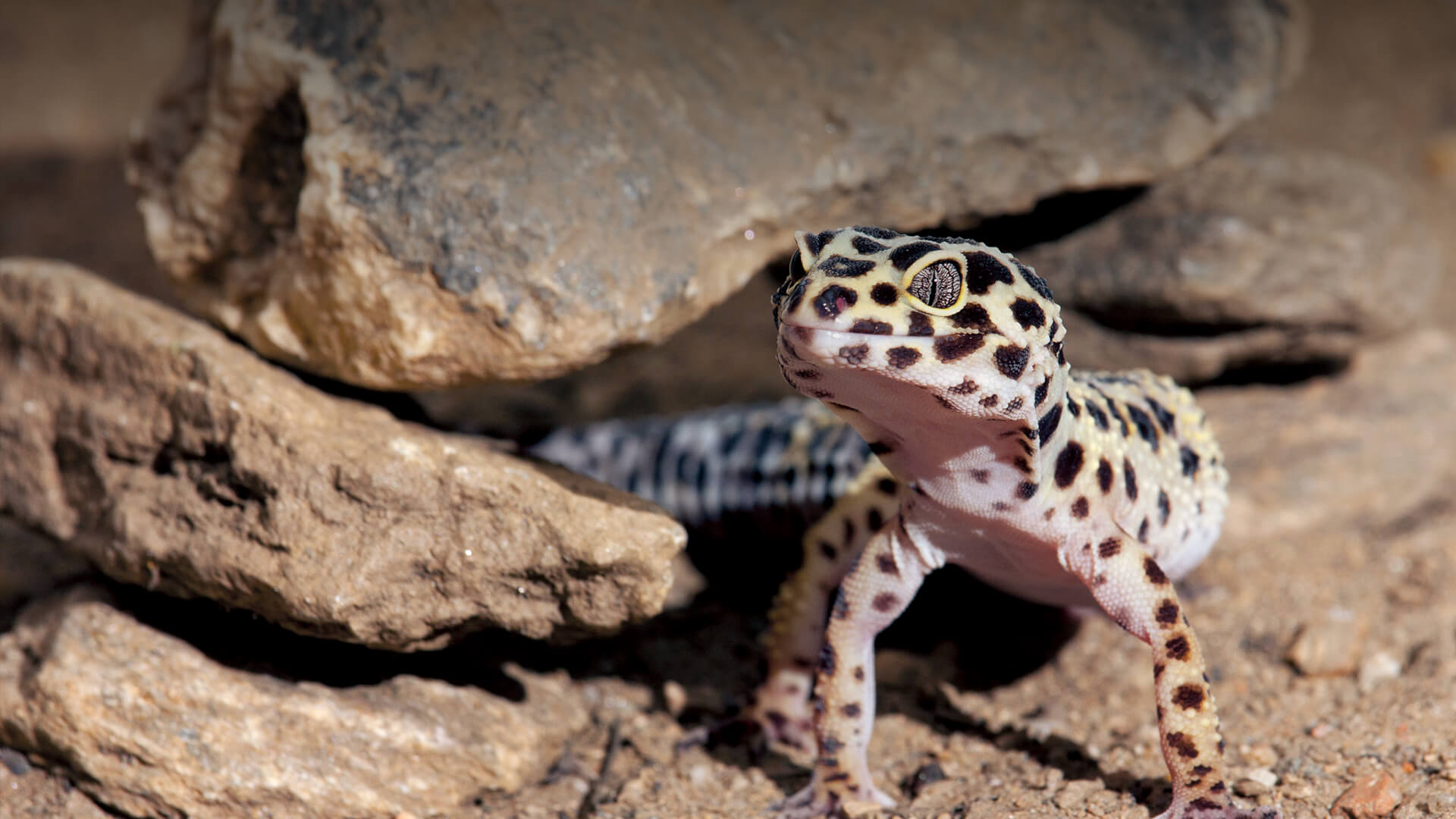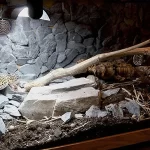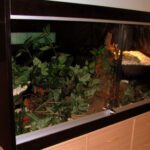Maintaining proper temperature in your leopard gecko’s habitat is essential for their health, comfort, and overall well-being. Experienced reptile keepers and veterinary experts emphasize that precise temperature control can make the difference between a thriving pet and one that may face health challenges. In this guide, we’ll walk you through everything you need to know about selecting and using the right thermometer to keep your leopard gecko happy and healthy.
Table of Contents
Why Temperature Control is Vital for Leopard Geckos
Dr. Sarah Jenkins, DVM, a leading reptile veterinarian at the Exotic Pet Care Center, explains: “Leopard geckos require specific temperature gradients to properly regulate their bodily functions. Even slight temperature variations can impact digestion, immune system health, and daily activity levels.” To support these bodily functions, leopard geckos depend on different temperature zones in their environment.
Optimal Temperature Ranges
Setting the right temperature zones in your gecko’s enclosure is crucial. Here are the ideal ranges for various sections:
- Basking Spot: 88-92°F (31-33°C)
- Warm Side: 85-88°F (29-31°C)
- Cool Side: 75-80°F (24-27°C)
- Nighttime Temperature: 70-75°F (21-24°C)
These gradients allow your leopard gecko to self-regulate its body temperature by moving to warmer or cooler areas as needed.
Types of Thermometers for Leopard Gecko Enclosures
Selecting the right thermometer is key to accurately measuring and maintaining temperatures. Here’s a breakdown of the three main types:
1. Digital Thermometers
Pros:
- High accuracy, usually within ±0.5°F
- Easy-to-read display
- Many models include humidity readings
- Quick response time for real-time monitoring
Cons:
- Requires batteries, which need periodic replacement
- More expensive than analog models
- May require occasional recalibration
2. Infrared Temperature Guns
Pros:
- Instantly reads surface temperatures
- Non-invasive, making it less stressful for your gecko
- Useful for checking multiple spots within the enclosure
Cons:
- Higher initial cost
- Measures only surface temperatures
- Requires proper technique for accurate readings
3. Analog Thermometers
Pros:
- Battery-free, simple operation
- Generally affordable
- User-friendly
Cons:
- Less precise than digital models
- Slower response times
- Can be harder to read accurately
Key Features to Consider When Choosing a Thermometer
To ensure you’re providing the best for your gecko, here are some critical features to look for in a thermometer:
Accuracy
Temperature precision is essential. Look for thermometers with:
- An accuracy rating of ±0.5°F or better
- Regular calibration capabilities for consistent performance
- Consistent readings across various tests
Durability
A durable thermometer lasts longer and provides reliable readings:
- Water-resistant construction helps it withstand humidity
- Strong probe cables for digital models
- High-quality materials for the casing
Ease of Use
Ease of use ensures you can quickly check temperatures without hassle:
- Clear, easy-to-read display
- Simple control settings
- Multiple mounting options for convenience
Comparative Analysis of Popular Thermometers
Here’s a quick comparison of some popular thermometers commonly used by leopard gecko owners:
| Model | Accuracy | Price Range | Battery Life | User Rating |
|---|---|---|---|---|
| Zoo Med Digital | ±0.5°F | $15-20 | 6 months | 4.5/5 |
| Exo Terra Digital | ±0.8°F | $20-25 | 12 months | 4.3/5 |
| Zoomed Infrared | ±2°F | $30-35 | N/A | 4.2/5 |
This table serves as a quick reference to help you select a reliable thermometer based on your budget and preferred features.
Correct Thermometer Placement and Usage
Proper thermometer placement is essential to get accurate readings. Here’s a placement guide based on recommendations from the Reptile Care Association:
- Primary Basking Area: Place the probe 1-2 inches above the basking spot. Monitor during peak heating hours and verify readings with a secondary thermometer.
- Cool Side Monitoring: Position the thermometer at gecko height, away from direct heat sources, and check at different times of the day.
- Ambient Temperature: Place another thermometer mid-height in the enclosure, away from walls and decorations, to monitor general temperature trends.
Managing Seasonal Temperature Changes
Seasonal shifts can influence your gecko’s enclosure temperatures. Here’s how to adjust:
Summer Considerations
During hot summer months:
- Increase ventilation within the enclosure
- Regularly monitor for temperature spikes
- Adjust heating elements as necessary to avoid overheating
Winter Adjustments
For cooler winter months:
- Check for drafts that may lower temperatures
- Consider supplemental heating if necessary
- Monitor nighttime temperatures to prevent excessive drops
Case Study: Success in Temperature Management
John Martinez, a seasoned leopard gecko breeder with over 15 years of experience, shares his insights: “After switching to a high-quality digital thermometer with dual probes, I noticed immediate improvements in my geckos’ activity levels and feeding response. Accurate readings allowed me to fine-tune their environment, resulting in healthier and more active pets.”
Common Temperature-Related Health Issues in Leopard Geckos
Temperature control is crucial for preventing health problems. Veterinary records and expert sources outline the following temperature-related issues:
- Digestive Problems: Insufficient basking temperatures can lead to digestive issues and impaction, affecting nutrient absorption.
- Metabolic Issues: Chronically low temperatures weaken the immune system and can stunt growth, particularly in younger geckos.
- Stress-Related Behaviors: Rapid temperature fluctuations can cause stress, leading to reduced appetite and diminished breeding success.
Frequently Asked Questions
Q: How often should I check temperatures?
A: Monitor temperatures at least twice daily, ideally in the morning and evening.
Q: Should I use multiple thermometers?
A: Yes, using 2-3 thermometers helps verify accuracy and monitor different zones within the enclosure.
Q: How often should I calibrate my thermometer?
A: For digital thermometers, calibrate every 3-6 months to maintain accuracy.
Expert Recommendations for Temperature Management
Dr. Michael Brown, a reptile specialist at the Exotic Animal Hospital, recommends investing in a high-quality digital thermometer with a probe feature. “The initial cost may seem high, but the accuracy and reliability it provides are invaluable in maintaining a stable environment for your leopard gecko.”
Conclusion: Providing the Best for Your Leopard Gecko
Choosing the right thermometer is a small investment that can make a significant impact on your leopard gecko’s quality of life. While digital thermometers with probes generally offer the best combination of accuracy and ease of use, the most crucial aspect is regular monitoring and maintenance of the enclosure’s temperature gradients.
In summary:
- Regularly verify readings to ensure accuracy
- Maintain backup thermometers for consistency
- Keep records of temperature changes and address variations promptly
By following these guidelines and using quality temperature monitoring tools, you’ll create an optimal environment where your leopard gecko can thrive.





